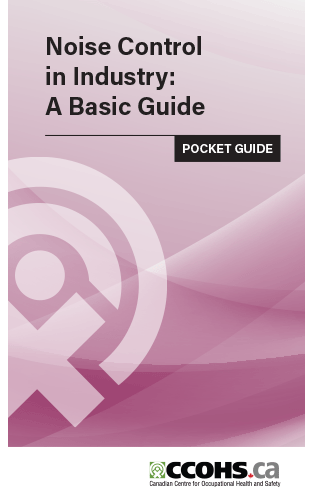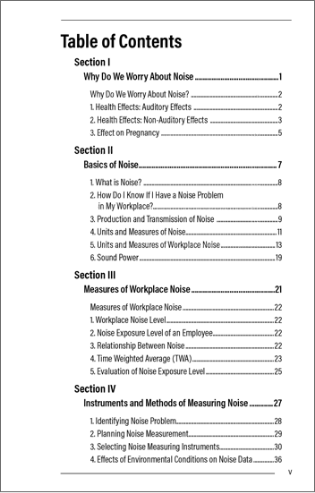Scheduled maintenance - Thursday, July 12 at 5:00 PM EDT
We expect this update to take about an hour. Access to this website will be unavailable during this time.
Learn how to recognize potential noise problems, take steps to control them, and develop a hearing conservation program.


Designed and written as a practical workplace training and reference tool, this 142-page pocket guide is filled with clear-language text including safety tips, charts, diagrams, checklists and illustrations.
This guide will help you to:
This guide provides basic knowledge and skills for preventing hearing loss due to noise exposure. It presents a step-by-step approach for dealing with workplace noise problems:
This guide is written in plain, non-technical language. Details of mathematical techniques for calculations using decibel and other logarithmic quantities are beyond the scope of this guide. For a detailed technical evaluation of noise exposure and implementation of control measures, a noise specialist should be consulted.
This guide is intended for workers, supervisors, health and safety committee members, health and safety representatives, industrial hygienists, occupational health and safety nurses and others with an interest in hearing conservation. The technical level of this guide meets the needs of the target audience.
Each publication produced by CCOHS undergoes several stages of review. As part of this review, representatives from government, employers, and labour are requested to comment on draft copies of CCOHS documents for technical accuracy and readability.
Although every effort is made to ensure the accuracy and completeness of the information, it is understood that CCOHS makes no warranty as to the accuracy or completeness of such information and assumes no liability for any damages or loss suffered as a result of any inaccuracy or incompleteness therein.
Version: Third edition
Publication date: March 2025 (Note: The publication content is current as of February 2020.)
CCOHS publications are unique in that they are developed by subject specialists in the field, and reviewed by representatives from labour, employers and government to ensure the content and approach are unbiased and credible.
Although our publications are protected by copyright, permission for non-commercial reproduction may be provided.
Please use our Copyright Authorization Form to request permission, or contact us for more information.